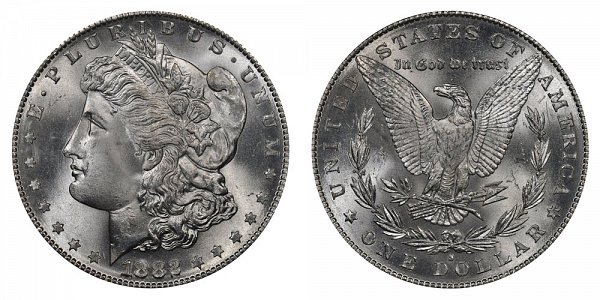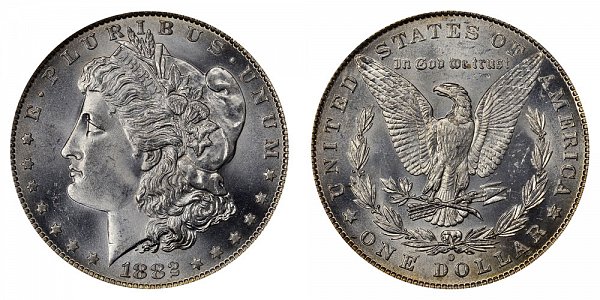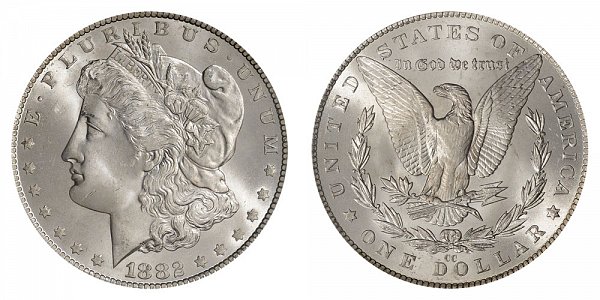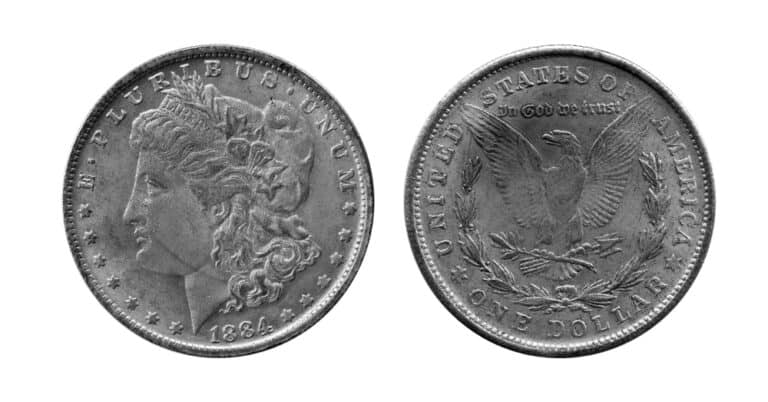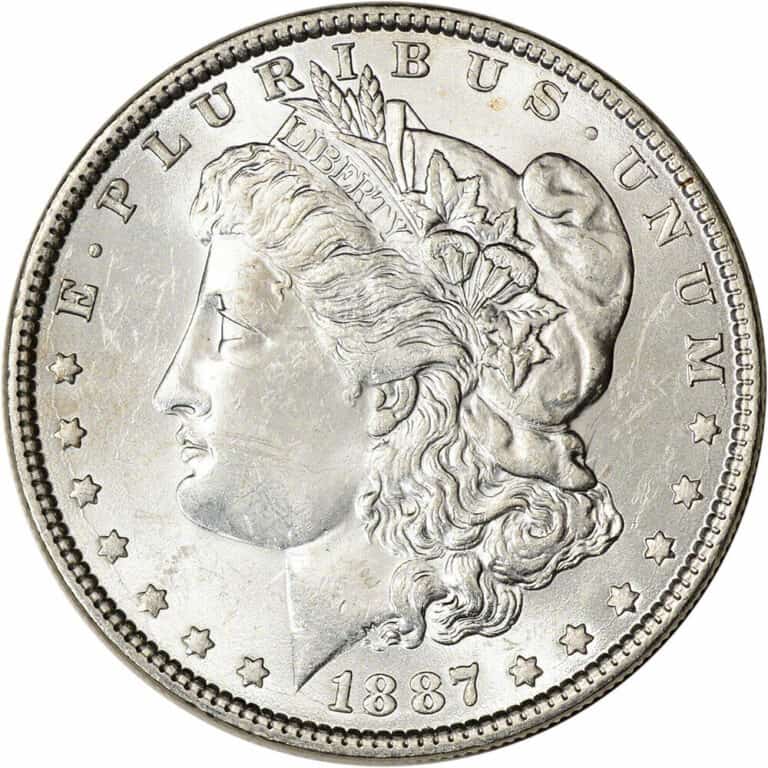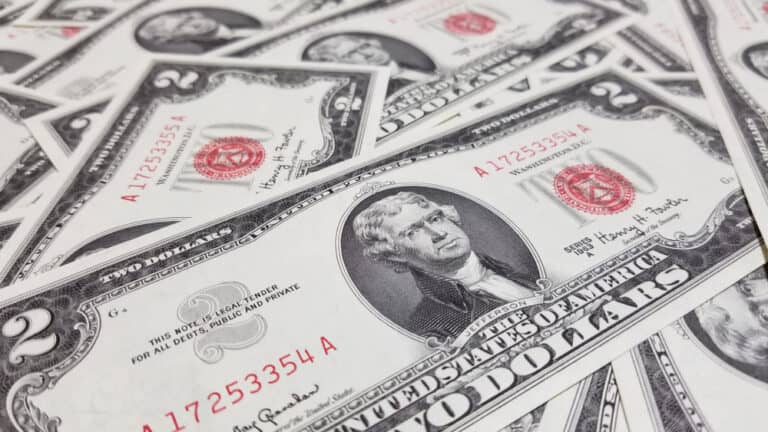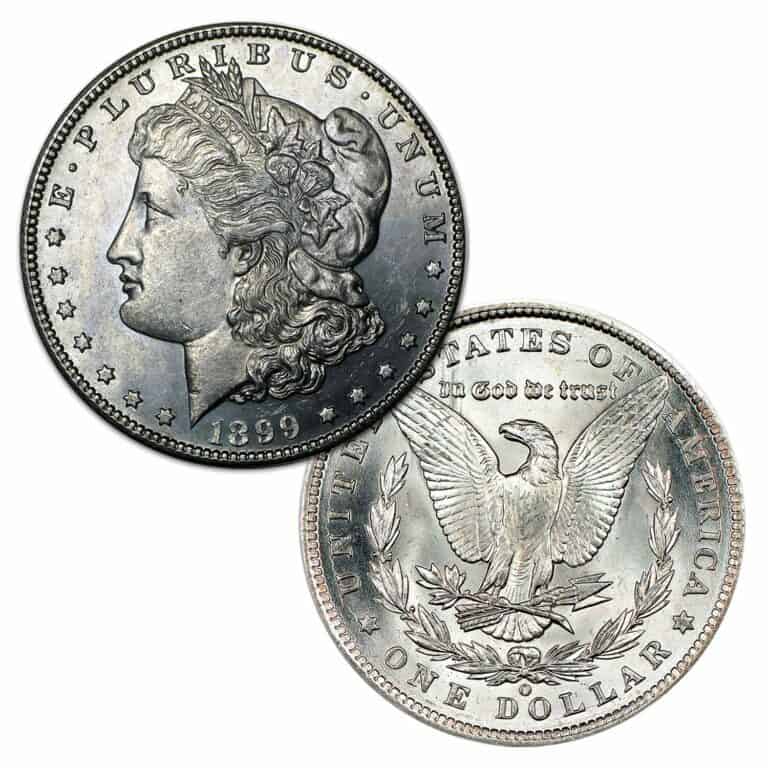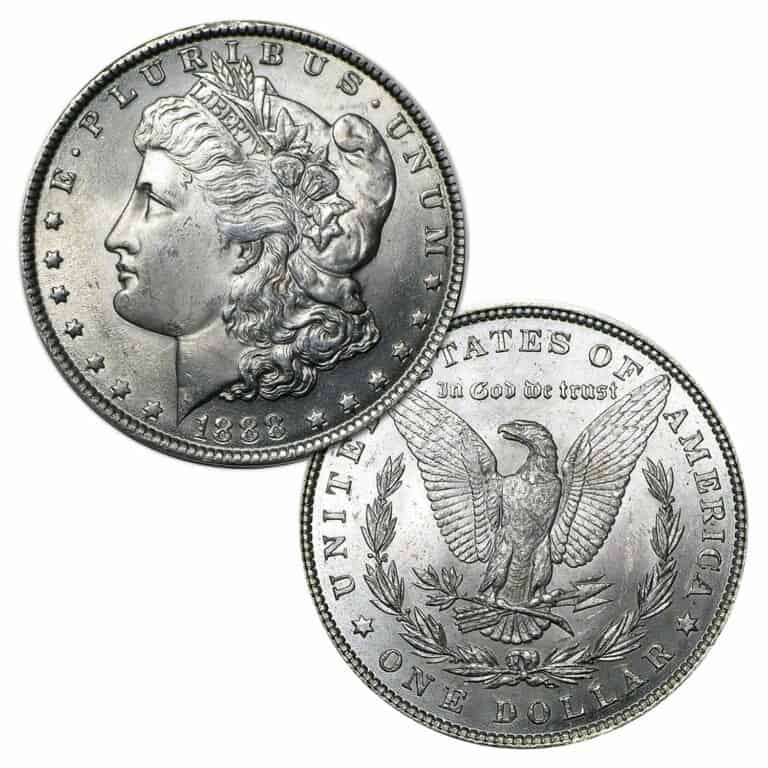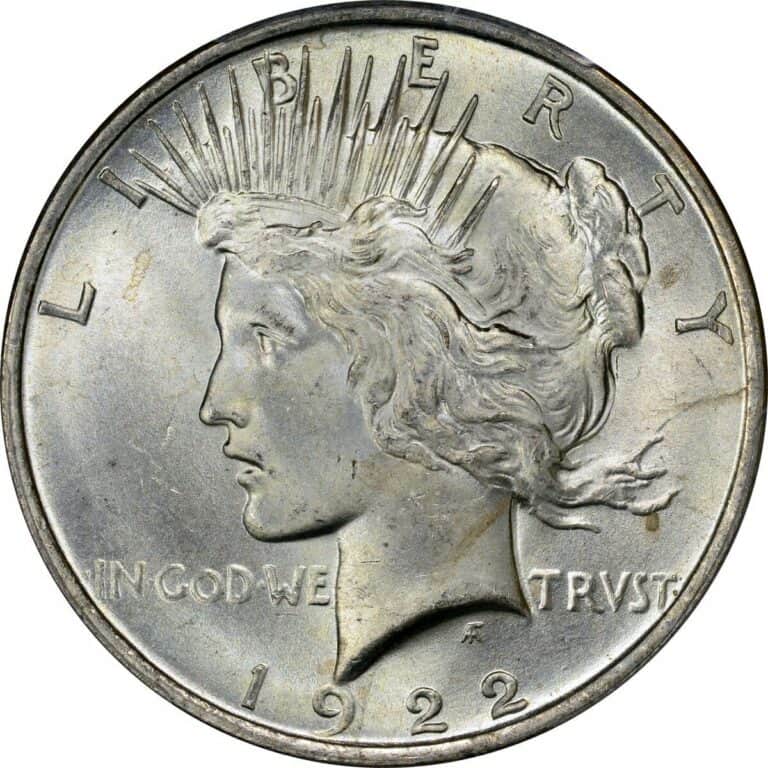1882 Silver Dollar Value: How Much Is It Worth Today?
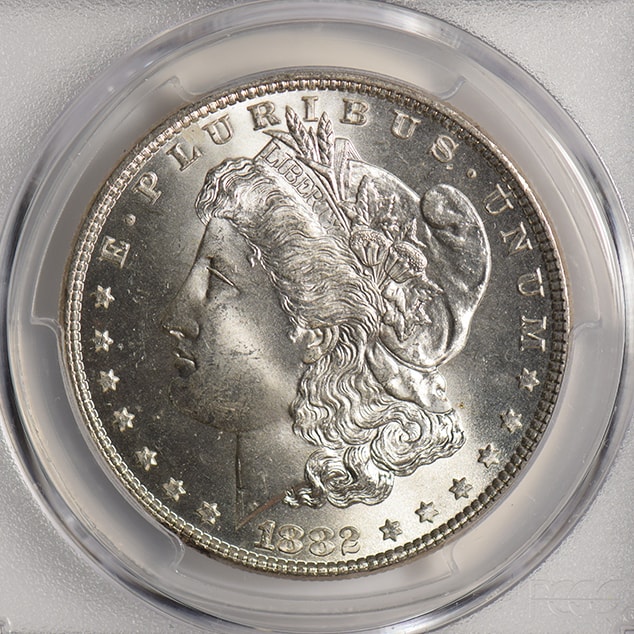
The 1882 silver dollar came out during the pioneer years of the Morgan silver dollar, and the coin has several unique varieties and values to consider. Collectors covet the coins for their age and design to start, but these are also extremely valuable coins that any can respect.
An 1882 silver dollar is worth at least its silver melt value, but the best preserved coins are worth $24 to $244 and beyond. Proof coins minted for collection in 1882 are now worth about $2,300.
The value of an 1882 silver dollar depends on its mintage and condition first, but smaller details may affect the ultimate appraisal of a coin. Keep reading to learn more about the nuanced value of the 1882 silver dollars.
1882 Silver Dollar Value Chart |
|||||
| Mint Mark | Good | Fine | Extremely Fine | Uncirculated | Proof |
| 1882 No Mint Mark Silver Dollar Value | $21.50 | $21.50 | $24.00 | $45.00 | / |
| 1882 S Silver Dollar Value | $21.50 | $21.50 | $24.00 | $45.00 | / |
| 1882 O Silver Dollar Value | $23.00 | $23.00 | $25.00 | $45.00 | / |
| 1882 CC Silver Dollar Value | $108.00 | $134.00 | $156.00 | $244.00 | / |
| 1882 Proof Silver Dollar Value | / | / | / | / | $2,300+ |
1882 No Mint Mark Silver Dollar Value
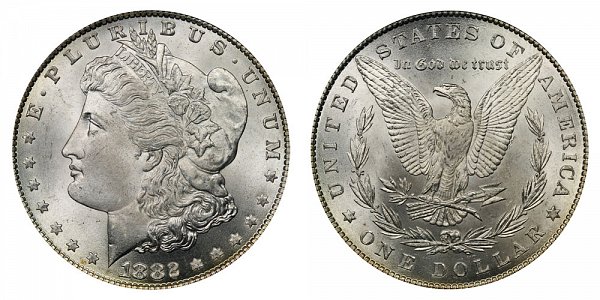
The 1882 no mint mark silver dollar contains the highest population of silver dollar coins from this year. All 11,100,000 coins came out of the Philadelphia Mint without any identifying marks (which is what identifies coins from the Philadelphia Mint).
Despite their large original population, the no mint mark 1882 silver dollar population was decimated by circulation and well-intended attempts to clean the coin (albeit improperly, therefore causing more damage to the silver dollars).
Silver dollars in “Good” or “Fine” condition rarely sell for anything more than their silver melt value, which is too volatile to pin down on any given day. Many choose to hold onto these coins as a form of financial security.
An 1882 silver dollar in “Extremely Fine” or “Uncirculated” condition is much more rare, and they sell for about $24 to $45 on the open market. Coins with proper grading achieve much more when they go to auction.
The current auction record belongs to an MS67+ 1882 no mint mark silver dollar that sold for $32,900 in June 2015. This coin is the only one of that grade seen by PCGS, and more recent auctions see lower grade MS65 coins sell for about $300.
1882 Silver Dollar Features
The 1882 silver dollar features George T. Morgan’s designs on its obverse and reverse as well as a reeded edge.
On the front we see a left-facing bust of Lady Liberty based on the face of Anna Willes Williams, a teacher and philosopher recommended to Morgan to sit for the design. She wears a Phrygian hat and a headband that reads LIBERTY, as well as wheat stalks, flowers, and leaves in her hair.
The obverse also reads the country’s Latin motto, E PLURIBUS UNUM, across the top rim and the year 1882 underneath. There are 13 stars divided 7 on the left and 6 on the right of the year.
Morgan’s reverse features a Bald Eagle with its wings stretched behind. The eagle holds a bundle of arrows in its left talons and an olive branch in its right. The coin reads UNITED STATES OF AMERICA along the top rim and ONE DOLLAR underneath, as well as “In God We trust” between the eagle’s wings.
A total of 27,574,100 Morgan silver dollars were minted in 1882. Each coin is a round shape with a diameter of 38.1 mm and a thickness of 2.4 mm. The coins are 90 percent silver and 10 percent copper, and they boast a silver weight of 24 grams.
1882 S Silver Dollar Value
Only 9,250,000 silver dollars were minted in San Francisco in 1882, and a good portion was not released until the middle of the 20th century. Despite the small number of the original coins, those with the S mark are more likely to be found at a high grade and therefore less valuable at these high grades.
Like those without a mint mark, lower grades of the 1882 S silver dollar are only worth their silver melt value under normal conditions. Error coins may be worth more, or you may find someone willing to pay more to get the coin in their collection.
Most collectors hold out until they can find an “Extremely Fine” or “Uncirculated” 1882 S silver dollar to snatch up. These sell for about $24 to $45 on the open market, but especially high grades rake in much more at the auction.
For example, a PCGS MS68+ 1882 S silver dollar sold for $27,025 back in May 2019. The auction record for a similar coin from the GSA hoard released nearly 70 years later sells for much less: $2,499.99 at an eBay auction in 2021, despite an MS66+ grade.
1882 O Silver Dollar Value
The 1882 O silver dollars were minted in New Orleans, and they make up the second smallest population of the coin from this year (not accounting for proof coins). Only 6,090,000 silver dollars were produced in New Orleans and bear the “O” mark.
Despite their scarcity, the 1882 O silver dollars tend to be avoided by collectors. The New Orleans mint had some weak strikes, resulting in a less attractive coin, and they only rake in about $23 to $45 on average.
There are several overpunched silver dollars from this year that multiply this value, and we’ll expand on this in the errors section of this post.
The auction record for this particular coin belongs to a PCGS MS68+ 1882 O silver dollar that brought in $108,687.50 at a June 2015 auction. While these coins are normally weakly struck, this particular one bears crisp details and a strong luster.
The lack of competition for comparatively graded coins makes it an especially desirable coin.
1882 CC Silver Dollar Value
The Carson City coins have the lowest circulating population of silver dollars from this year, and only 1,133,000 were produced. Of these, a large portion were not put into circulation immediately, instead held back in vaults to back up the current U.S. silver certificates.
When the government stopped exchanging silver certificates for silver dollars in 1964, they still had more than half of these coins in those vaults. A mass sale of the CC-minted silver dollars started in 1970, and collectors quickly bought them up.
Despite sitting for so long, few of these coins exist in a high grade. They were stored about 1000 coins together in a single canvas bag, leaving plenty of room for damage from other coins and age.
The low population of 1882 CC silver dollars available today means they sell for much more than the other varieties. Even a “Good” CC silver dollar sells for about $108, while “Uncirculated” coins sell for about $244 or more.
The auction record was set back in January 2001 when a NGC MS65 1882 CC silver dollar sold for $46,000.
1882 Proof Silver Dollar Value
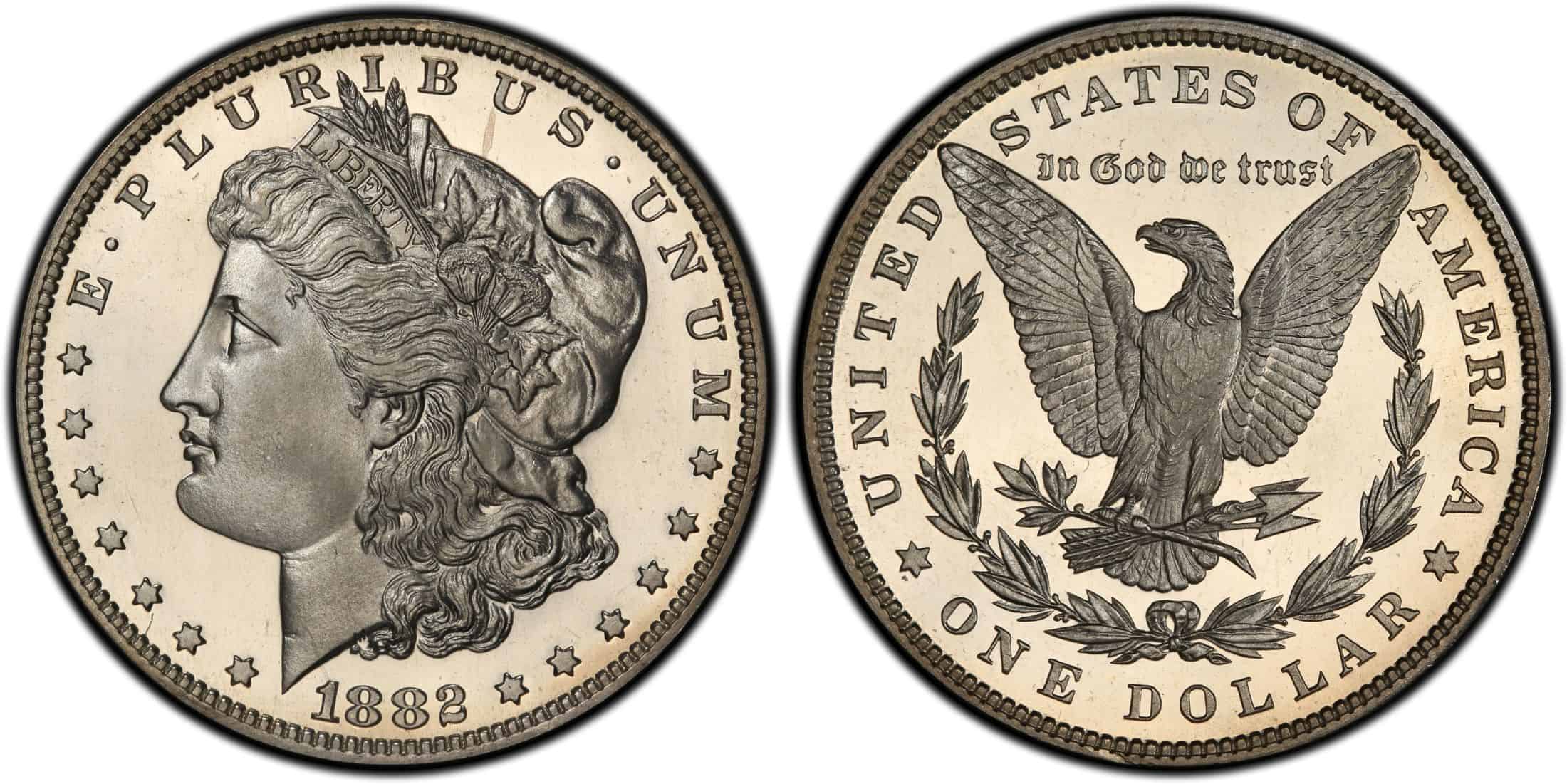
Only 1,100 proof silver dollars were produced in 1882, making them an extremely select group of coins. Like all other varieties, value depends on the coin’s grade, but most sell for between $2,300 and $20,000.
Proof coins are expected to be of a high grade, at least PR 60 or greater, but even a single digit higher can be thousands of dollars of difference. Another detail to consider when grading proof coins is how well struck they are, often indicated by a Cameo (CAM) or Deep Cameo (DCAM) grade.
For example, a PR67 1882 proof silver dollar is often valued at $12,000. A coin with the same grade but a CAM grade jumps the value to $13,200 and a DCAM signifier brings it to $19,000.
The current auction record belongs to a PCGS PR68 CAM 1882 proof silver dollar that sold for $63,250 in 2011. This particular coin is regarded as the single finest cameo at that grade, and the four finest DCAM coins are of a lower grade.
1882 Silver Dollar Grading
While general grading is no replacement for professional grading services, it allows hobbyists to evaluate their coins and develop a preliminary opinion on prospective purchases.
Professional grading operates on a 70 point scale and includes several nuanced designations, but you can assign a general descriptor to your coin depending on its current condition.
A “Good” 1882 silver dollar is well worn and has mostly flat features, but its inscriptions and general outline are still intact. When bumped up to a “Fine” grade, these coins retain some lower lines that keep them from becoming a silhouette.
Most collectors limit their pursuits to “Extremely Fine’ or “Uncirculated” 1882 silver dollars. On the lower end, you still witness a loss of design and luster, but it appears closer to the original appearance of the coin.
Ideally, your coin retains all its details and luster, even on high areas like the chin, hair, and neckline. A magnifying glass is important in ensuring no disqualifying marks.
Rare 1882 Silver Dollar Errors
The 1882 silver dollar doesn’t have a long list of widespread production errors, although you may encounter one from time to time. The most common error varieties are the overpunched O/S coins, and we’ll expand on those in the next section.
Only Mint errors may add onto the value of your 1882 silver dollar, and these must be verified first. While there are several types of mint errors that occur, they fall into:
- Strike errors that happen when the coin is being stamped. There are a few 1882 silver dollars with off-center strikes, but other examples include multiple strikes and overstrikes.
- Planchet errors that relate to the blank used to strike the coin. These issues usually involve a clipped planchet that takes a bit of material from the rim.
- Die errors that give the coin its designs. The most common die errors occur as the mold breaks down over time, which wasn’t a major issue with the 1882 silver dollar and its fairly new designs.
Errors increase coin value only after taking the original coin grade into circulation. Generally, higher graded coins see the highest increase in value due to error, although you may get a $5 premium on lower grades.
1882 Overpunched Silver Dollars
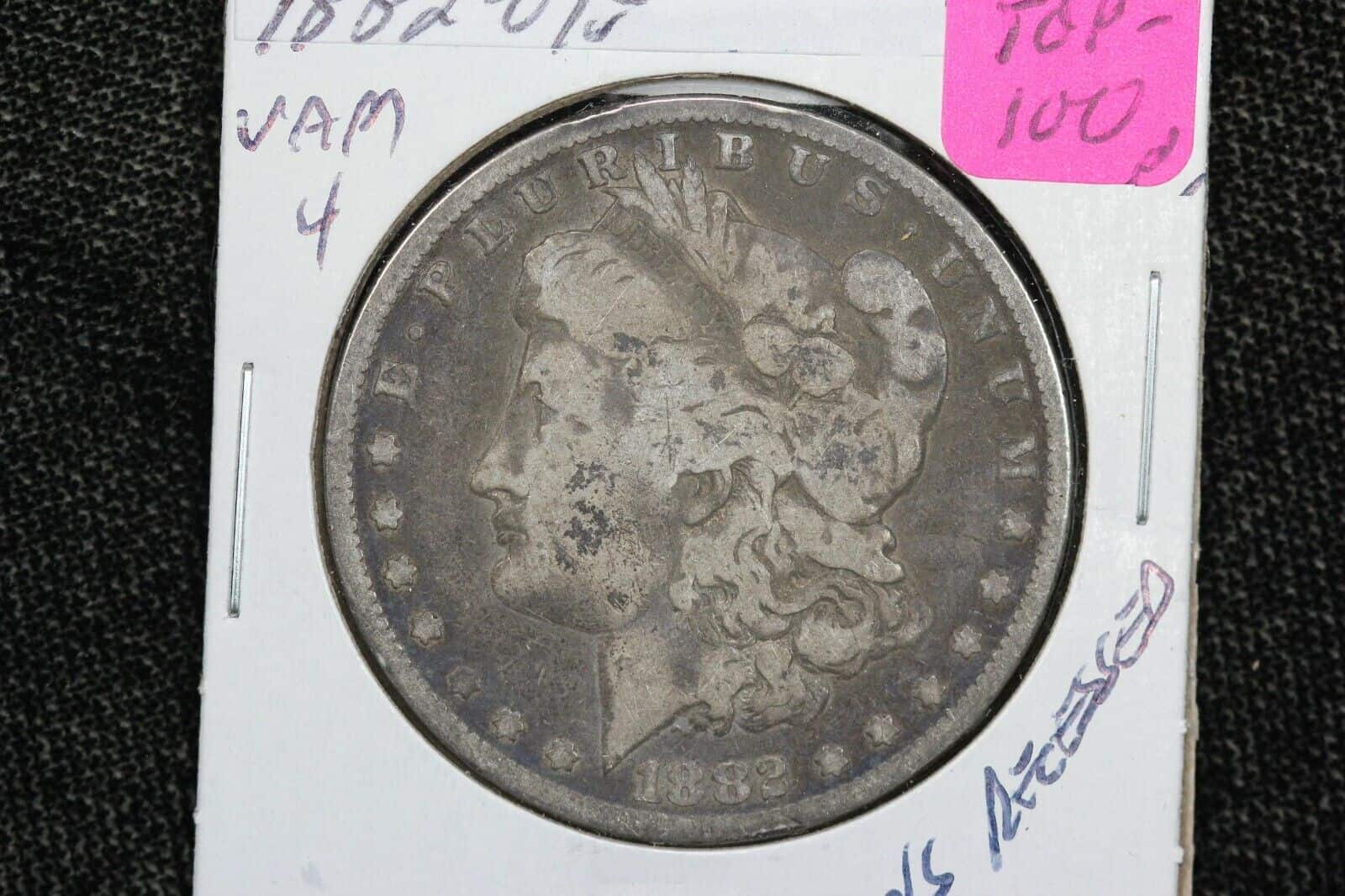
The overpunching error on the silver dollars is the only widespread one. There’s no specific number on how many overpunched 1882 silver dollars exist, and the severity of overpunching affects the ultimate value of the coin.
These coins used dies that were first designed for the San Francisco 1882 silver dollars that were reallocated for New Orleans Morgan dollars, and you see both the O and S mint mark on these coins.
A weak MS60 O/S 1882 silver dollar sells for about $200 to $225, while strong overpunching bumps the price up to $225 to $270. The increase in value spike exponentially when you get to MS65 or greater and coins are worth $7,000 to $55,000 or more.
1882 Silver Dollar FAQs
Where Is the Mint Mark on an 1882 Silver Dollar?
The mint mark on an 1882 silver dollar is on the bottom center of the reverse, below the wreath. Silver dollars from every mint except Philadelphia mark their initials slightly between the “D” and “O” in DOLLAR.
Is an 1882 Silver Dollar Rare?
The 1882 silver dollar is rare for a few reasons. Of the 27 million produced, few exist today and very few exist at a high grade. Rarity may be increased depending on the particular mintage of the coin and Mint errors that occurred during the silver dollar’s production.
How Much Is a 1882 Silver Dollar Coin worth Today?
An 1882 silver dollar coin is worth at least its silver melt value, which currently fluctuates around $20 per coin, but collectible grades are worth $24 to $45 on average. Rare 1882 CC silver dollars are worth about $108 at a low grade and $244 or more when uncirculated.
How Do I Know If My 1882 Silver Dollar Is Real?
Counterfeit coins are a plague with silver dollars, but there are a few ways to determine whether your 1882 silver dollar is real. Professional grading is the most effective method, but you can check your coin for magnetism (it should not be magnetic), proper measurements (38.1 mm diameter and 2.4 mm thickness), and proper weight (26.73 grams).
